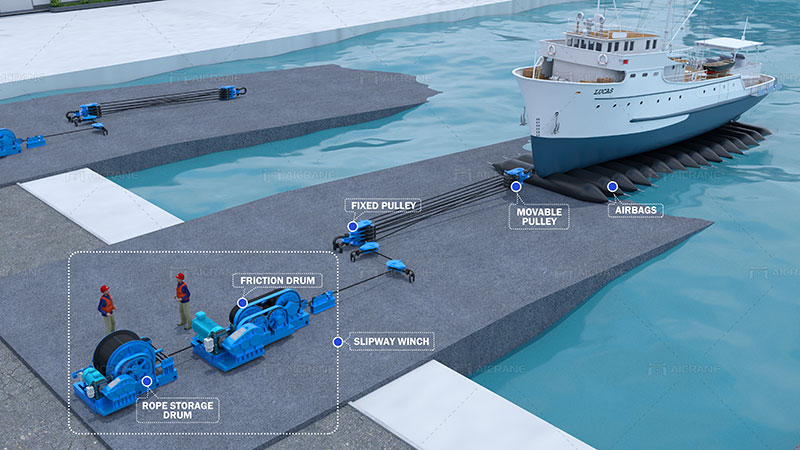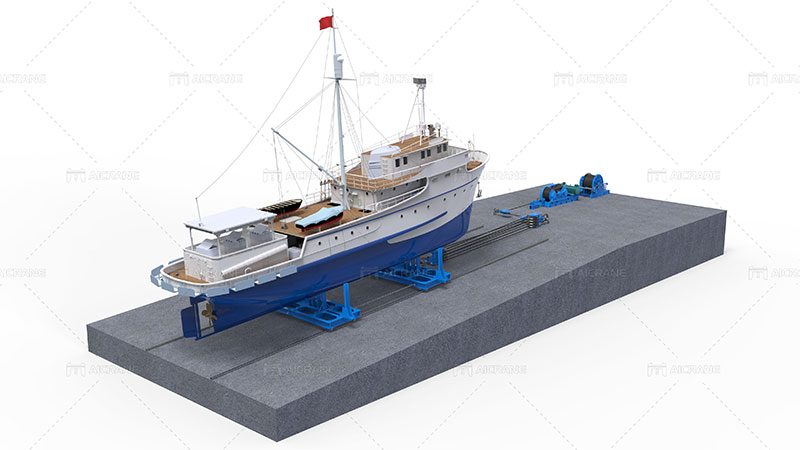Slipway winches play a crucial role in marine operations, allowing boats and ships to be smoothly launched or lifted out of the water for maintenance, repairs, or storage. The efficient handling of slipway winches is essential to ensure the safety of personnel, the protection of vessels, and the overall success of the operation. In this article, we will delve into key techniques that contribute to the efficient handling of slipway winches, enhancing both productivity and safety.
1. Proper Equipment Inspection and Maintenance
Before any slipway operation begins, it’s imperative to conduct a thorough inspection of the slipway winch and its components. Regular maintenance ensures that the winch is in optimal working condition, reducing the likelihood of breakdowns or accidents during operation. This includes checking for any signs of wear, lubricating moving parts, inspecting cables for damage, and ensuring that all safety mechanisms are functional.

2. Comprehensive Planning
Efficiency in slipway winch handling starts with meticulous planning. This involves determining the appropriate winch capacity for the vessel, considering factors such as weight, size, and water conditions. Adequate planning also includes assessing the weather, tide, and any potential obstacles that might affect the operation. Having a well-defined plan minimizes delays and prevents unnecessary risks.
3. Skilled Personnel and Training
Efficient slipway winch handling requires a skilled and trained workforce. Operators should be knowledgeable about winch operation, safety protocols, and emergency procedures. Regular training sessions keep operators up-to-date with the latest techniques and technologies, ensuring that they can handle various scenarios competently.
4. Proper Load Distribution
Proper load distribution is crucial to maintain balance and stability during slipway operations. Uneven weight distribution can lead to tilting or even capsizing of the vessel as it’s lifted or lowered. Before engaging the winch, ensure that the load is evenly distributed, and if necessary, use additional supports to prevent tilting.
5. Controlled Tension and Speed
Maintaining controlled tension and speed during winch operations is essential for both safety and efficiency. Rapid or jerky movements can cause damage to the vessel or put unnecessary strain on the ship winch system. Smooth and controlled movements not only protect the vessel but also enhance the overall operation’s success.
6. Communication and Coordination
Effective communication and coordination among all team members involved in the operation are paramount. This includes clear communication between the winch operator, vessel crew, and any ground personnel. Establishing a set of standardized signals and using radios or intercoms can help ensure seamless communication, preventing misunderstandings and potential accidents.

7. Constant Monitoring
Vigilant monitoring is crucial throughout the entire slipway operation. Operators should closely watch for any signs of strain on the winch, irregular movements of the vessel, or other anomalies. Having dedicated personnel solely responsible for monitoring can help identify and address issues promptly.
8. Emergency Preparedness
Despite meticulous planning, emergencies can arise unexpectedly. Being prepared for such scenarios is vital. Have a clear and rehearsed emergency plan in place, covering potential issues like winch malfunctions, sudden weather changes, or vessel instability. Regular drills ensure that the team can respond swiftly and effectively when facing unexpected challenges.
9. Post-Operation Maintenance
Efficiency doesn’t end when the vessel is safely on the slipway. After the operation, it’s essential to conduct a post-operation inspection to ensure that the winch and associated equipment are undamaged. Proper maintenance and cleaning also contribute to the longevity of the winch and its components.
10. Continuous Improvement
Efficiency in slipway winch handling is an ongoing endeavor. After each operation, review the process to identify areas for improvement. This could include refining communication protocols, adjusting load distribution methods, or implementing new technologies to enhance safety and speed.
In conclusion, efficient slipway winch handling techniques are a blend of proper planning, skilled personnel, precise execution, and continuous improvement. By adhering to these techniques, marine operations can be conducted with enhanced safety, reduced downtime, and improved overall productivity. Remember that safety remains paramount at all times, and a well-trained team working in harmony with a well-maintained marine winch system is the cornerstone of successful slipway operations.